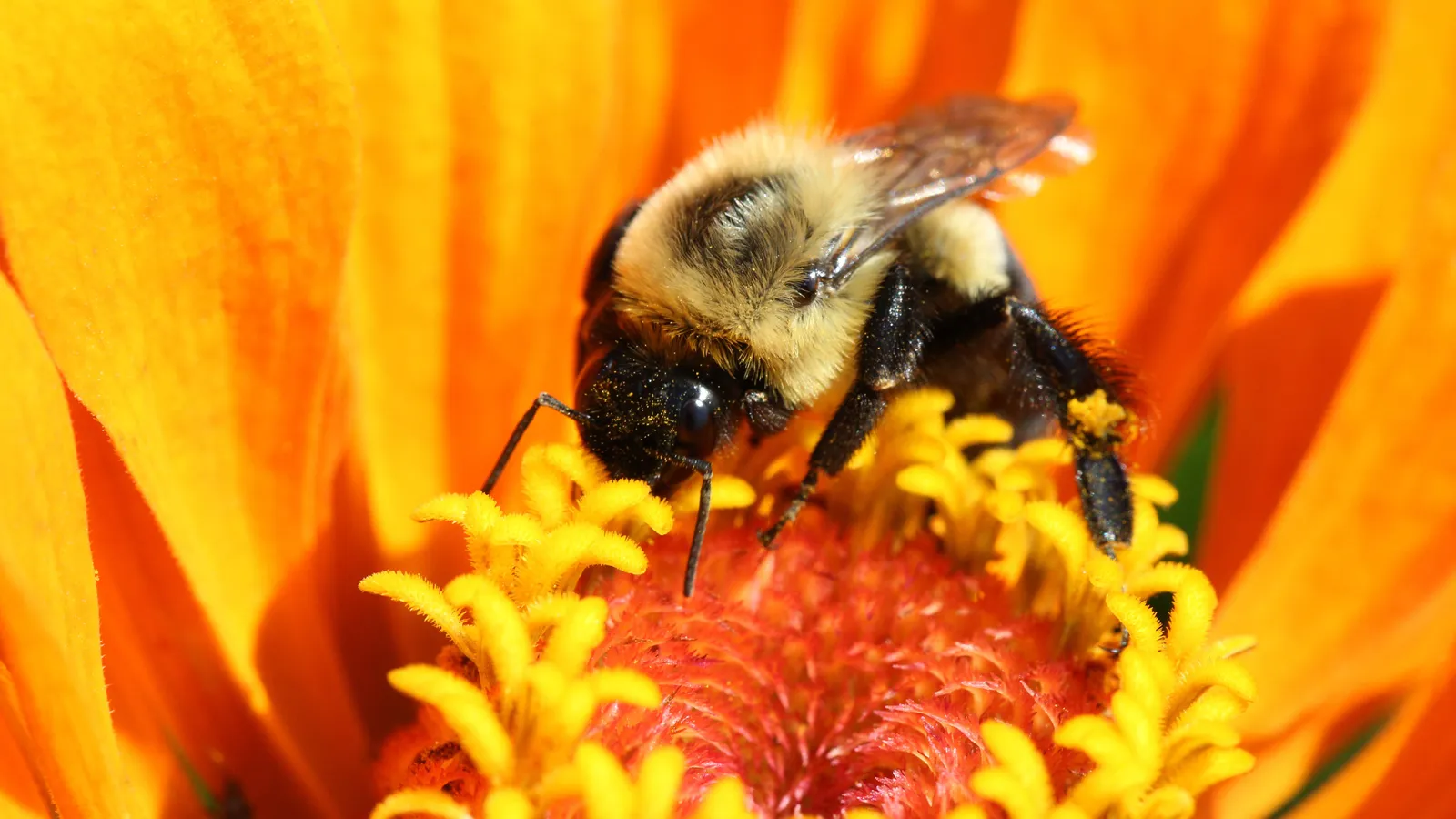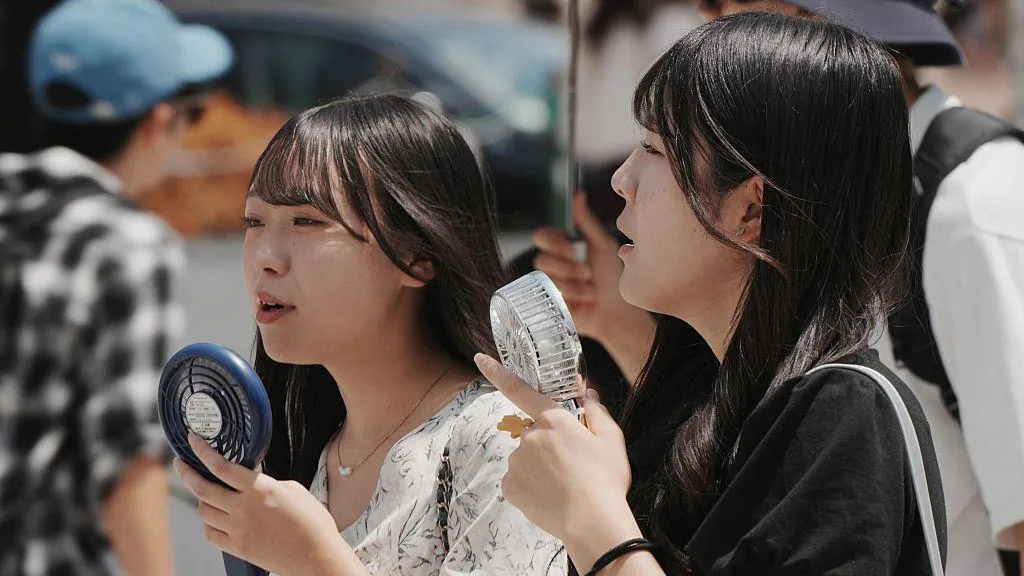How light pollution disrupts plants' senses
Dazzling lights are causing ecological chaos, disrupting plants' seasonal rhythms and their fragile relationship with pollinators.

One summer night in 2014, a group of biologists and ecologists staked out several streetlamp-lit suburban areas just outside Wallingford in the UK. While their nighttime presence may have prompted some concern of potential thievery among the locals, they were actually there to observe nocturnal moths going about their nightly pollinating routine.
The scientists were studying how the streetlights affected the moths' behaviour. Their theory was that the artificial light at night would disrupt the moths' flight patterns enough that it would impede how much, or how well, they could pollinate.
Sure enough, of the hundreds of moths they observed, over 70% were drawn upwards towards the lights and away from the flowering plants, resulting in a noticeable reduction in plant pollination as well as the number of pollen types that were transported by the moths. This proved true across several different nocturnal moth species and over 28 varieties of plants, meaning the ripple effect could have wide-reaching consequences.
This is just one narrow view into how light pollution is disrupting the natural world. Moths aren't the only pollinators impacted by dazzling city lights. Bees are also feeling the effects, along with all the plants they pollinate. As artificial lights disrupt how nocturnal pollinators interact with plants, their pollen output can be affected, which may, in turn, impact how well bees and other diurnal pollinators can fertilise them during the daytime.
Light pollution already encompasses about a quarter of the planet and continues to worsen, increasing by about 6% every year with growing urbanisation. Global light pollution has increased by at least 49% over 25 years.
While its impacts are still being studied and vary widely across species, scientists do know light pollution is affecting how plants grow and reproduce. It disrupts their seasonal rhythms, their ability to sense and react to natural light, and their fragile relationship with pollinators. The more strained that relationship becomes, the more our food supply may be put in jeopardy. And just one broken link could create unfathomable physiological consequences up and down the food chain.
How plants sense the world
A primary reason light pollution, or artificial light at night, impacts most living things on this planet is that they have a circadian rhythm. This rhythm is the natural sleep-wake cycle that repeats every 24 hours and is governed by when it's light or dark. Most creatures, whether nocturnal or diurnal, carry out their living processes by this cycle, so when it is disrupted by, say, a perceived shorter nighttime, it can put undue stress on how internal systems function. And the longer that disruption goes on, the more potential there is for detrimental impacts.
Circadian clock disruptions can also affect regulating chemicals in humans, plants and animals, most notably melatonin, a molecule that is produced in response to darkness and helps regulate the circadian rhythm. "[It's] supposed to be elevated overnight, but light pollution suppresses melatonin, which, over time, can cause a whole sweep of negative health effects," says Valentina Alaasam, a researcher at the University of Nevada in the US. For humans, health impacts include an increased risk of sleep disorders, diabetes, depression, heart conditions, and breast cancer.
The effects aren't all that dissimilar to jet lag. Say you're flying from London to New York. Since you're traveling to a place five hours behind your home base, you're effectively gaining five hours of either day or night (depending on when you're travelling), which throws your circadian rhythm off kilter. The resulting jet lag can leave you feeling foggy, sleep-deprived, and generally under the weather for several days. That's just the result of one circadian rhythm disruption. Now imagine you're a tree on the side of a city street constantly being exposed to artificial lights from street lamps, cars, and buildings. If your internal system always thinks it's daytime, it can turn your life upside down.
"Plants are like animals in that they need a sleep cycle to process stuff, and what they do is they put attention on different activities at different times of the day. So they need to know the time of day," says Joanne Chory, professor at the Salk Institute for Biological Studies in San Diego, California.
Budburst happens up to 7.5 days earlier in areas that are brighter at night due to light pollution
Plants have photoreceptors, 13 that we know of, that they use to determine things like day length. This helps them know when to bloom and, for deciduous trees, when to drop leaves – arguably two of the most important events in a tree's calendar. Five of the photoreceptors absorb near-infrared light from the Moon and starlight, and eight absorb a type of UV light. By artificially extending the length of the day, light pollution can trigger these photoreceptors to the point where a plant's flowering pattern changes.
"Plants will get stressed out under [artificial] light. They can photosynthesise more, and because they are there's more stress," says Brett Seymoure, an ecologist and assistant professor of biological sciences at the University of Texas at El Paso. "It's just like a bodybuilder who's just always working out." When a plant photosynthesises, they're taking in energy, and if they're doing that all the time, it can be overwhelming and create a reactive type of oxygen that kills the plant.
Couple that with warmer winters and longer summers due to climate change, and you end up with trees growing well out of their natural rhythm, which can ultimately weaken them.
Seasonal changes
Blooming or budbursts typically happen in the spring with the arrival of warmer temperatures coinciding with longer days and more UV rays. However, Seymour says light pollution is scrambling those cues for plants. "The seasonal changes of plants have been affected by artificial light at night," says Seymoure. "They do budbursts sooner or they hold onto their leaves longer, and that's because the photoperiod, which is the ratio of daytime to nighttime, is being masked by artificial light at night."
One study that analysed 13 years of budburst data from deciduous trees in the UK found that budburst happened up to 7.5 days earlier in areas that were brighter at night due to light pollution. Budburst can also change when trees drop their leaves in the autumn because, again, artificial light interferes with the perceived photoperiod of shortening days as winter approaches.
Normally, as days grow shorter, deciduous trees stop the production of chlorophyll, the primary pigment used in photosynthesis, and pull nutrients out of their leaves, which is why they change colour and eventually fall to the ground. "But since they're just constantly bombarded by street lights, they don't get that photoperiod, so they're going to hold on to their leaves a lot longer, and they could lose all those leaves that have this chlorophyll which is actually very energetically costly," says Seymoure.
Light pollution disrupts pollinators' circadian rhythms as well as their general life patterns, which ultimately impedes plant reproduction. Several studies, the UK moth study included, have found that nocturnal pollination is diminished under artificial lights. A 2017 study found that nocturnal plant-pollinator interactions were 62% lower in brightly lit areas than in non-illuminated ones. When those interactions shrink, plants aren't as stimulated to produce pollen, which leaves less pollen for diurnal pollinators like bees.
The seasonal changes of plants have been affected by artificial light at night – Brett Seymoure
Just like jet lag affects humans, light pollution can also stress pollinators' bodies by reducing their sleep and recovery time, ultimately making it harder for them to pollinate and reproduce.
Light pollution even impacts migration by attracting insects (and other flying animal species) away from their natural, intended path and into dangerous and often deadly scenarios. "[It] has been shown to disorient [bird] migration routes and change where species breed or overwinter," says Alaasam. These migratory changes can potentially impact plants that are pollinated by birds or plants that get their seeds dispersed by birds.
'Insect apocalypse'
Pollinator populations are steadily declining, and ecologists like Seymoure fear it's the result of a confluence of stressors, including light pollution, chemical pollution, climate change, and habitat loss. Insects are an essential keystone to life on this planet, and as we lose them, the species domino effect becomes clearer. For example, if honeybees native to the US die out, all the species of plants they pollinate could follow, with no other intervention – that's 80% of flowering plants. The US Department of Agriculture estimates those plants account for 25% of the food Americans eat today.
"Around 200 million years ago, flowering plants and insects started to co-evolve with each other. If you start to alter either the behaviour of the insect or the behavioural physiology of the plant, you're going to affect both of them," says Seymoure. "[With light pollution] you have this new weird situation that's going to have consequences for everything on this planet because pretty much everything depends on insects and flowering plants – 80% of our crop species are pollinated by insects."
Plants and pollinators rely on temperature and light changes to know how, and when, to carry out their life processes. As the planet warms and light pollution grows, these processes will be thrown more and more off-balance, and it's unclear if the affected species will adapt fast enough to survive.
"Light pollution and climate change are making these cues [light and temperature] less reliable and causing some ecological chaos," says Alaasam.
Despite all of this, there are pollinators that aren't as negatively affected by light pollution. In fact, some have evolved to use it to their advantage. One study that looked at "city moths" from 10 different populations found that they'd adapted not to fly to artificial light at night. "Moths that had been exposed to artificial light over the last 20 to 50 years no longer had the genes that allowed them to fly to the light," says Seymoure.
Pollinating bats also seem to have found a positive loophole. Not only do artificial lights illuminate the bugs they like to eat, but a 2022 study found they also increased pollination due to more fruit and seeds on the artificially illuminated trees (a potential result of excessive blooming). That may only be a temporary boon, however. As Seymoure fears, too much artificial light exposure could be overtaxing trees, weakening them over time.
Many other insect species have never been attracted to light, so they aren't directly affected by light pollution. However, that doesn't mean they aren't indirectly impacted in other ways. For example, bees aren't attracted to light, but they're negatively affected by light pollution because the plants they pollinate aren't as stimulated to produce pollen by nocturnal pollinators who are driven away by artificial lights.
It might seem like these small changes won't have sweeping effects, but all these changes can also save money through lower energy costs too. This might help convince your office manager, landlord or city council to cut back on light pollution, says Alaasam.
These changes are starting to happen more and more in small, eco-conscious pockets of the world. The more communities start reaping the benefits, then perhaps others will follow suit, drawn like, forgive the expression, a moth to a flame.
-bbc







